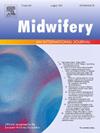Transforming breastfeeding outcomes: The power of antenatal breastmilk expression, a retrospective cohort study in Ireland
IF 2.5
3区 医学
Q1 NURSING
引用次数: 0
Abstract
Background
Antenatal breast milk expression is safe and effective in diabetic women at low risk of complications. Antenatal breast milk expression is associated with higher breastfeeding rates at birth and postpartum.
Aim. This research aimed to evaluate the impact of antenatal breast milk expression on breastfeeding outcomes in an Irish cohort.
Methods
Mothers were offered antenatal breast milk expression support packs at 36 weeks' gestation if they met one or more criteria: insulin dependent diabetic; elective section; multiparity pregnancy; previous feeding issues; or planned separation. Women at risk of complications were excluded. Data was extracted from maternity records of women who gave birth between November 2022 - April 2023 at a regional hospital. Chi-square (χ2) or Fisher’s exact tests and Independent t-tests or Mann-Whitney U tests compared differences in categorical and continuous data respectively.
Findings
Of mothers who received antenatal breast milk expression support packs (n = 63), 76.2 % (n = 48) expressed antenatal colostrum and 70.8 % (n = 34) brought colostrum to hospital. Most mothers who expressed antenatal colostrum also exclusively breastfeeding at birth (95.8 %, n = 46; χ2(1) = 13.237, p < 0.001), timepoint 2: <48 h post birth (89.6 %, n = 43; χ2(1) = 4.495, p = 0.034) and at discharge (75 %, n = 36; χ2(1) = 6.300, p = 0.012).
Conclusion
Antenatal breast milk expression was high when provided with a support pack. Antenatal breast milk expression had a positive impact on initiation and continuation of breastfeeding in this cohort. Therefore, a longitudinal intervention to assess exclusive breastfeeding duration is warranted.
改变母乳喂养结果:产前母乳表达的力量,爱尔兰的一项回顾性队列研究。
背景:产前母乳表达对糖尿病妇女安全有效,并发症风险低。产前母乳表达与出生时和产后较高的母乳喂养率有关。目的:本研究旨在评估爱尔兰队列中产前母乳表达对母乳喂养结果的影响。方法:孕妇在妊娠36周时提供产前母乳表达支持包,如果她们符合一个或多个标准:胰岛素依赖型糖尿病;选修部分;多胎产怀孕;以前的喂养问题;或者有计划的分离。排除有并发症风险的妇女。数据取自2022年11月至2023年4月期间在一家地区医院分娩的妇女的产妇记录。卡方(χ2)或Fisher精确检验和独立t检验或Mann-Whitney U检验分别比较了分类数据和连续数据的差异。结果:接受产前母乳表达支持包的母亲(n = 63)中,76.2% (n = 48)的母亲表达了产前初乳,70.8% (n = 34)的母亲将初乳带到医院。绝大多数表达产前初乳的母亲在出生时也完全母乳喂养(95.8%,n = 46; χ2(1) = 13.237, p < 0.001),时间点2。结论:在提供支持包的情况下,产前母乳表达较高。在这个队列中,产前母乳表达对母乳喂养的开始和继续有积极的影响。因此,纵向干预评估纯母乳喂养持续时间是必要的。
本文章由计算机程序翻译,如有差异,请以英文原文为准。
求助全文
约1分钟内获得全文
求助全文
来源期刊

Midwifery
医学-护理
CiteScore
4.50
自引率
7.40%
发文量
221
审稿时长
13.4 weeks
期刊介绍:
Midwifery publishes the latest peer reviewed international research to inform the safety, quality, outcomes and experiences of pregnancy, birth and maternity care for childbearing women, their babies and families. The journal’s publications support midwives and maternity care providers to explore and develop their knowledge, skills and attitudes informed by best available evidence.
Midwifery provides an international, interdisciplinary forum for the publication, dissemination and discussion of advances in evidence, controversies and current research, and promotes continuing education through publication of systematic and other scholarly reviews and updates. Midwifery articles cover the cultural, clinical, psycho-social, sociological, epidemiological, education, managerial, workforce, organizational and technological areas of practice in preconception, maternal and infant care.
The journal welcomes the highest quality scholarly research that employs rigorous methodology. Midwifery is a leading international journal in midwifery and maternal health with a current impact factor of 1.861 (© Thomson Reuters Journal Citation Reports 2016) and employs a double-blind peer review process.
 求助内容:
求助内容: 应助结果提醒方式:
应助结果提醒方式:


